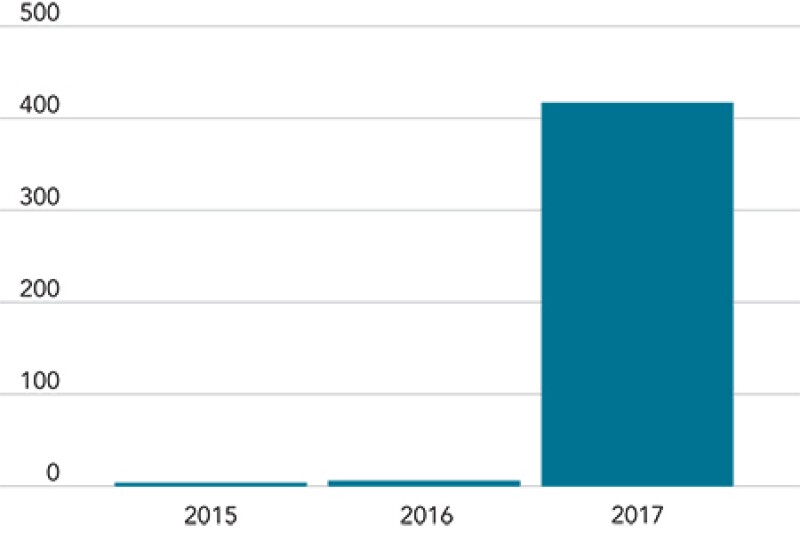Trade marks: the good, the bad and the ugly, ugly trolls
After many years of anticipation and after several false alarms, it seems that Canada will soon be overhauling its trade mark law. The Canadian Trademarks Office is anticipating that the new law will be in force in early 2019. While the Trademarks Office previously, on several occasions, anticipated that the new law would come into force earlier, they seem considerably more committed this time.
These will be the most significant changes to Canadian trade mark law in more than 50 years. With these changes, Canadian trade mark applications will be simplified, looking increasingly like European applications and somewhat less similar to US applications.
A summary of some of the main changes:
Simplified applications
Trade mark applications will be simplified and will no longer include a date of first use. Details of use and registration of the mark abroad will also no longer be required.
Madrid
Canada will become a member of the Madrid Protocol.
New non-traditional marks
The definition of a trade mark will be greatly expanded to cover anything that functions as an indicator of source and will include any "sign, or combination of signs" that serve that purpose.
As a result, protection will be available for traditional and non-traditional marks, including a word, a personal name, a design, a letter, a numeral, a colour, a figurative element, a three-dimensional shape, a hologram, a moving image, a mode of packaging goods, a sound, a scent, a taste, a texture or the positioning of a sign.
Divisional applications
It will finally be possible to divide applications in Canada, which will be of strategic assistance during prosecution and in some oppositions.
No more Declarations of Use
A Declaration of Use will no longer be required. This will apply to all pending applications.
Term harmonised with other countries
The term of registration will be reduced from 15 to 10 years.
Letters of Protest
Third party correspondence (i.e. Letters of Protest) will be permitted during prosecution.
No more registration fee
The government registration fee will be eliminated.
Nice
The Nice Classification of goods and services will be adopted (classification is currently voluntary).
Fees per class
Consistent with the rest of the world, fees per class will be introduced.
Some examples of the new fees include:
Trade mark application filing fee
The filing fee will be $330 CAD for the first class plus $100 CAD for each additional class instead of the current $250 CAD filing fee regardless of the number of classes.
Multi-class applications should therefore be filed prior to the implementation of the new law to avoid this significant fee increase for multi-class applications.
Registration renewal fee
The registration renewal fee will be $400 CAD for the first class plus $125 CAD for each additional class instead of the current fee of $350 CAD regardless of the number of classes.
Registrations renewed prior to the implementation of the new law will not be subject to the higher, per-class fees. Accordingly, renewals should be considered prior to the implementation of the new law.
What should Americans consider prior to implementation of new Canadian trade mark law?
A few key strategies can be employed during the months that remain before the new law takes effect in order to both obtain maximum benefit from the current legal landscape for trade marks in Canada and to positively position American brand owners for the upcoming new law:
File multi-class applications before new law is implemented to save fees.
Renew registrations before the new law is implemented to save fees.
File applications to register sound marks now. Currently, they can be registered with no evidence of distinctiveness. Under the new law, applicants will have to prove distinctiveness.
Protect your important brands in Canada as soon as possible, before a troll does.
Beware of trolls
Historically, trolls (or squatters, or pirates) were not a problem in Canada. Sadly, the trolls have arrived.
In some cases, trolls apply to register trade marks in one country that are used by brand owners in other countries with the goal of forcing those owners to negotiate with the trolls when they enter the new market. In light of Canada's current trade mark application requirements, this was not previously a serious problem. However, with the announcement that the trade mark amendments will eliminate the use requirements to obtain a trade mark registration, trolls have started to capitalise on the impending changes.
New data shows that seemingly baseless applications filed by trolls are already on the rise.
All-class applications filed per year

What is happening?
In 2017, there was a sharp increase in the number of applications filed in all 45 classes. Trade mark applications listing all 45 classes immediately evoke suspicion since it is unlikely that any one individual or business has a genuine intention to use a trade mark in association with every class of goods and services.
As of December 2017, there were 427 of these all-class applications on the Canadian database. Of those, four were filed in 2015 and six were filed in 2016. The remaining 417 all-class applications were filed in 2017, representing a huge increase in comparison with the preceding years. The majority of these all-class applications appear to be held by known trade mark trolls. Among the suspicious applications are those seeking to monopolise established brand names such as EUIPO, Fashion Week, and Pan Am, given names such as Pedro, Melanie, and Claire, and generic words such as TAXI, PERK, CHOCOLATE, DEAL, and EXCELLENT. These applications are currently pending.
While the ultimate intentions of these trade mark trolls are unclear, this activity is troubling and is already creating problems for brand owners. There have been many instances of these troll applications being cited against the legitimate applications of brand owners. Overcoming these citations can be difficult.
Why now?
Why have the trolling activities already started? There are two reasons.
Firstly, all of the applications mentioned above were filed based on proposed use in Canada. Currently, applicants who file based on proposed use must eventually declare that they have used the mark in Canada prior to obtaining a registration. However, once the new trade mark law comes into force, it will no longer be necessary to file any declarations of use.
Secondly, as noted above, Canada does not currently have a per-class filing fee. Rather, the fee to file a trade mark application is the same whether it contains one class or 45. However, once the changes are implemented, Canada will adopt a fee-per-class system for new applications. As a result, there are significant cost advantages to filing multi-class applications now rather than waiting until the amendments come into force. Once the new law comes into force, the cost to file a 45 class application will rise from $250 to $4,730 CAD.
What to do?
As the implementation of the amendments approaches, we will undoubtedly continue to see an increase in trolling activity. Accordingly, it is important for companies to review their Canadian portfolios now to ensure that all important marks are protected, whether by filing new applications or maintaining existing registrations. Similarly, American brand owners should consider proactively filing applications in Canada as soon as (or even before) they contemplate entering the Canadian market.
It is also important to regularly monitor the Canadian Trademarks Office database to identify trolling applications as soon as possible, so that more options are available to defeat them. Since the trolls have already arrived and appear to be sophisticated, brand owners should be prepared to engage in oppositions and expungement proceedings in order to protect their trade marks.
Patents: changes associated with the Canada-European Union Comprehensive Economic and Trade Agreement (CETA)
Amendments to the Patent Act and associated regulations came into force on September 21 2017, giving effect to Canada's obligations under CETA. There are significant changes, particularly with respect to pharmaceutical patent law.
Firstly, certificates of supplementary protection (CSPs) were introduced, providing for restoration of patent term to account for marketing delays resulting from lead time required to obtain regulatory approval. The maximum term of a CSP is two years, substantially less than the maximum five-year patent term extension available under US law to account for marketing time lost awaiting FDA approval. This is the only form of patent term extension or restoration available in Canada. Unlike US patents, the term of Canadian patents is not subject to adjustment to account for patent office delay.
It is important for American applicants to be aware that a CSP is only available if the Canadian application for marketing authorisation is filed within 12 months of the first application for marketing authorisation in any of the United States, the European Union or any member country thereof, Australia, Switzerland, or Japan. It therefore may be necessary to revise regulatory approval plans for Canada in order to benefit from a CSP.
Only a single CSP can issue in connection with a marketing authorisation. A priority regime, based on the date of patent grant, determines CSP eligibility when there are multiple applicants. American applicants therefore should consult with their Canadian representatives with respect to measures for expediting grant of patents for which a CSP will be sought.
The CETA changes also comprehensively alter the regime that has governed pharmaceutical patent litigation in Canada for nearly 25 years. The summary proceedings previously in place, in which an innovator seeks an order from the Federal Court, enjoining the Minister of Health from issuing marketing authorisation to a second person, has been replaced by a full right of action, with accompanying procedural guarantees and discovery obligations. The new regime is intended to provide equivalent and effective rights of appeal to all litigants (the previous summary proceedings were moot once marketing authorisation issued), and to end the practice of dual litigation, wherein a full patent infringement action followed summary proceedings.
Changes associated with the Patent Law Treaty (PLT)
Amendments to the Patent Act and Patent Rules are anticipated to come into force perhaps as soon as 2019, largely for compliance with the PLT. These amendments will simplify and harmonise a number of administrative practices. Separate from the PLT requirements, the Patent Act and Rules will be amended to provide improved protection for applicants and patentees during force majeure events such as floods or power failures, which prevent them from communicating effectively with the Patent Office.
Significant changes under the amended Patent Act and Rules that will be of interest to American applicants and practitioners include the following:
Reduced requirements to obtain a filing date
It will be possible to defer payment of the filing fee and a translation of the application into English or French. It will also be possible to defer filing a specification at all by instead making reference to a previously regularly filed application.
24/7/365 electronic filing
A filing date may be secured on a day when the Patent Office is closed for business (e.g. Saturday or Sunday) if the application is filed by electronic means.
Addition to specification or addition of drawing
A procedure is introduced whereby the applicant may add to the specification or add a drawing, without loss of the original filing date, if the addition is wholly contained in a priority document, and the addition is made within two months from filing, or within two months from notice by the commissioner of patents that part of the application appears to be missing.
Restoration of priority
Restoration of priority is introduced, such that it will be possible to claim priority to a previously regularly filed application filed up to 14 months before the Canadian (or PCT) filing date, if the request is made within the same time period, and the applicant states that the failure to file the application in a timely manner was unintentional.
Shortened term for national phase entry
A PCT application must enter the Canadian national phase within 42 months from the priority date, although an additional late fee is payable if the applicant enters the national phase more than 30 months from the priority date. Under the proposed Rules, the late entry option is removed. If the applicant fails to enter the national phase by the 30 month deadline, it is still possible to do this within 42 months of the priority date, but only upon submitting a declaration that the failure to enter the national phase in a timely manner was unintentional and a statement of the reasons for the failure. The commissioner of patents has to determine that the failure was unintentional.
Extension of time limits in unforeseen circumstances
The amended patent regime will provide greater flexibility to deal with floods, power failures, and other events by permitting the commissioner of patents to extend time periods on account of unforeseen circumstances, if the commissioner is satisfied that it is in the public interest to do so.
Notice of certain deadlines prior to abandonment or expiry
The Patent Office will be obliged to provide notice that certain deadlines have been missed before an application is deemed to be abandoned. This will include failure to pay, request examination, or to pay a maintenance fee on a pending application. Notice will similarly be required before a patent is deemed to have expired for non-payment of a maintenance fee.
Due care standard for reinstatement in some instances
Canadian patent applications become abandoned if action is not taken by the prescribed deadline. At present, the application may be reinstated by request, paying a fee, and taking the omitted action within 12 months of the date of abandonment. That is, reinstatement is as of right. Under the amended Act and Rules, the requirements for reinstatement will be more stringent in certain cases where abandonment only occurs after notice of the missed deadline – namely missed payment of the examination fee or a maintenance fee. In such instances, a due care standard will apply if reinstatement is effected more than six months from the original deadline. The applicant must state the reasons for the failure to take the action that led to abandonment, and the commissioner must determine that "the failure occurred in spite of the due care required by the circumstances having been taken." What constitutes due care is currently unknown. Reinstatement under the due care standard may be subsequently challenged in Federal Court.
Payment of maintenance fees
Currently, only the Canadian patent agent may pay a maintenance fee on a pending application. This will change such that anyone, such as an annuity service, can pay maintenance fees on pending applications, as is presently the case for issued patents.
Third party rights
An exception from infringement of a patent is introduced for otherwise infringing acts that a third party, in good faith, first committed or made "serious and effective preparations" to commit during a prescribed period after an applicant or patentee failed to request examination or pay a maintenance fee by the original deadline. It will be for the courts to clarify what constitutes "serious and effective preparations" to commit an infringing act. The application of third party rights may be avoided by taking action within six months of the original deadline.
Privilege
Already in force since June 2016 are amendments to the Patent Act and Trademarks Act, establishing privilege for communications between clients and their patent and trade mark agents. Importantly, such privilege extends to communications between foreign patent and trade mark agents and their clients in jurisdictions which similarly recognise such privilege. Accordingly, this protection may extend to communications between American patent and trade mark attorneys or agents and their clients, if those communications are privileged under US law.
Final tips
American trade mark and patent owners should make preparations now in order to best accommodate and benefit from these changes to Canadian IP laws. Indeed, in some instances, action may be warranted before the new laws come into force.
Trade mark applicants may wish to take advantage of the current low trade mark application filing fees and registration renewal fees available before the new law is in force. As well as this, companies may wish to ensure that their important brands are protected in Canada to protect against trolls.
Patent applicants must be mindful that it will no longer be possible to enter the Canadian national phase of a PCT application as a matter of right more than 30 months from the priority date. Pharmaceutical patentees seeking a CSP will need to ensure that their application for marketing authorisation in Canada follows within 12 months of the first application for marketing authorisation abroad, and should aim to expedite prosecution of the relevant Canadian patent application.
The preceding is intended as a timely update on Canadian intellectual property and technology law. The content is informational only and does not constitute legal or professional advice. To obtain such advice, please communicate with Smart & Biggar's offices directly.
David Schwartz |
||
|
|
|
David Schwartz is a partner in Smart & Biggar’s Ottawa office. His practice focuses on patent law in the fields of biotechnology, pharmaceuticals and chemistry, as well as plant breeders’ rights. David advises on regulatory matters relating to the Patented Medicines (Notice of Compliance) Regulations, data protection under the Food and Drug Regulations and matters concerning the Patented Medicine Prices Review Board. He appears regularly in oral proceedings before the Patent Appeal Board and has handled first-to-invent conflicts under the pre-1989 Patent Act. David has testified on patent law reform before both the House of Commons Standing Committee on Industry, Science and Technology and the Senate National Finance Committee, and has lectured on patent law at Queen’s University and the University of Ottawa. In 2013 he was named LMG Life Sciences Canadian Patent Attorney of the Year and Best Lawyers 2016 Biotechnology Law Lawyer of the Year in Ottawa. David is a past president of the Intellectual Property Institute of Canada. |
Philip Lapin |
||
|
|
|
Philip Lapin is a partner in Smart & Biggar’s Ottawa office. He is the chair of the Smart & Biggar’s trademark operations group and is recognised as one of Canada’s leading trade mark lawyers. With more than 20 years of experience, Philip is responsible for managing and providing strategic advice concerning the trade mark portfolios of many Canadian and multinational corporations. He has handled the clearance, prosecution and registration of thousands of trade marks, and has particular expertise in trade mark opposition and cancellation proceedings before the Trademarks Office. In addition, Philip files, prosecutes and advises clients with respect to all aspects of Canadian industrial design law and practice. He is listed in World Trademark Review 1000, Euromoney’s Expert Guides: Guide to the World’s Leading Trademark Law Practitioners and Managing Intellectual Property’s IP Stars Handbook: Trademark & Copyright. |












